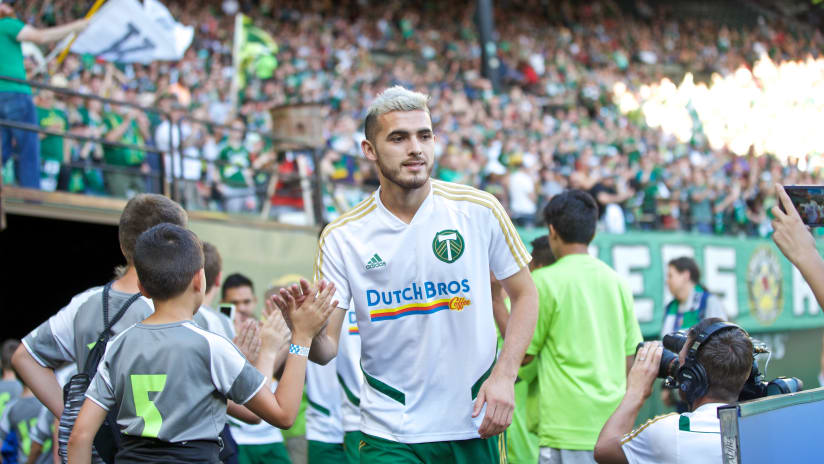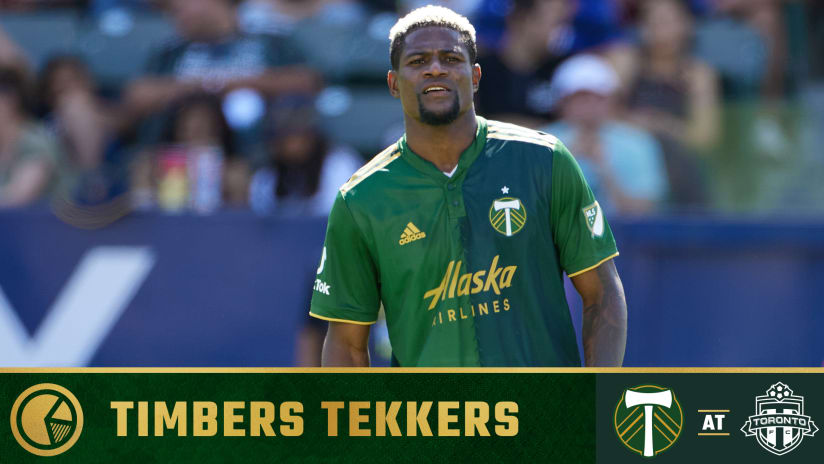After last week’ssignings landed the final piece of the Portland Timbers’ initial offseason shopping list, with not one but two strikers addressing a primary concern coming out of 2019, focus could shift from what the team wanted to do to what, one month before the start of their new season, the team needed to do. With the possible exception of adding depth at right back – depth that was dealt a hit when, earlier this preseason, Bill Tuiloma was ruled out for two months – the biggest question concerned one of the team’s most promising young talents: What’s going on with Cristhian Paredes?
After the team’s president of soccer Gavin Wilkinson, at the beginning of the offseason, said securing the Paraguayan midfielder on a permanent deal as a must-do this winter, the story went silent, a symptom of a long, complicated process between the Timbers, Paredes’ loaning club (Mexico’s Club América) and the Major League Soccer league offices – whose interpretation of the move was important to how Paredes would fit under the team’s roster restrictions. Now, though, those forces have aligned, with Portland announcing Wednesday that their 21-year-old is no longer on loan.
“Cristhian is a young, dynamic midfielder with a very bright future and we are thrilled to finalize an agreement with Club América to keep him in Portland long-term,” said Gavin Wilkinson, general manager and president of soccer for the Timbers. “He’s a player we value a great deal, and securing his rights this offseason was a top priority for the club.”
We’ve covered Paredes’ virtues both before and recently, with his selection to MLSsoccer.com’s annual list celebrating the league’s young talent giving us an opportunity to celebrate his 2019 season. One of the premises behind that post is worth repeating here: the idea that the style with which Paredes plays makes it easy to forget how young he is. Perhaps also it makes it easy to overlook what his loss would have meant to the team.
That loss was a very real possibility. Based on nothing more than the time it took to finalize this deal, fans can read between the lines and see this wasn’t a matter of shaking hands on a preordained swap. Club América could have recalled Paredes, kept him or tried to move him elsewhere, or otherwise make a prolonged process even more difficult. Likewise, within a Major League Soccer landscape where a Collective Bargaining Agreement between clubs and players is still being forged, where rules and new mechanisms between teams makes 2019’s world slightly but meaningfully different than 2020’s, there were bureaucratic obstacles to leap, too. It may not have helped that Portland’s need to use every inch of roster flexibility to put together this year’s squad left the team with fewer options for Paredes.
Ultimately, those puzzle pieces aligned, but what if they hadn’t? To a certain extent, the Timbers had options, with the central midfield depth chart having Andrés Flores, Eryk Williamson and Renzo Zambrano in reserve. Florés has proved his value over the last two years – most meaningfully, started a semifinal-clinching leg in Seattle during the team’s 2018 MLS Cup final run – while both Zambrano and Williamson performed well in spot starts last season. In addition, Portland coaches feel Andy Polo, an occasional central midfielder since his 2018 arrival, can continue to be an option through the middle, while a healthy Tuiloma is likely to see time as a defensive midfielder through the season.
But there is a reason why Paredes has, for much of his first two seasons in Portland, been the preferred starter. Though it’s not impossible that players like Williamson and Zambrano could prove as valuable once they see more MLS time, the coach’s choices imply there’s a gap between them and Paredes, now. What’s more, Paredes is the youngest of those players: one year younger than Williamson; four younger than Zambrano. Not only is Paredes slightly ahead of his peers, now, but he may be more likely to improve in the future.
Without him, too, the balance in the team’s preferred midfield would change, even if only slightly. When starting next to Diego Chara, Paredes’ size, strength, range and ball-winning provides the team its best option to fortify a midfield behind the team’s attack, potentially allowing Savarese to give more liberties to Sebastián Blanco, Diego Valeri and, this year, Yimmi Chara. Plus, with five goals in 41 career appearances, Paredes is already showing his ability to be dangerous as a fifth man in attack could translate from his youth level success to MLS. Players like Williamson and Zambrano could, in time, provide the same value. They’ve only been able to make 17 MLS appearances combined, thus far. Paredes current value, though, isn’t a hypothetical.
As his time in Portland progresses, so too should Paredes’ game, but for this exercise, let’s stick in the present. Should Paredes have left, it’s possible Portland would have been fine. Williamson or Zambrano could have grown into the role. Florés may have provided the stability needed to give them time. Maybe Tuiloma would have emerged as an anchor in Portland’s new-formed midfield. With Paredes, though, the team didn’t engage those scenarios. It doesn’t have to fight through doubt. With their first-choice midfielder back in the fold, Portland can continue on its current path, rather than being forced into a new course.
Now, we can move on from the uncertainties of Paredes’ team (and which team he’d be on) and focus the more interesting questions around the player: questions about his ceiling, and his future. Having already collected over 3,000 regular-season minutes in MLS, Paredes may now be in a position to leverage his experience, worrying less about answering questions in a new league than building on the lessons he’s learned. The potential he’s shown to forces errors high in midfield, get into attack, and make himself an option in the penalty box could see last year’s four-goal haul grow into a six-, seven-goal season, especially if he ends up with more than last year’s 19 starts. Conversely, Paredes may need to develop a more diverse game to reach another level, particularly in a league which, as much he’s getting used to it, it’s getting used to him.
Regardless, those progressions are set to happen in Portland, now. After a winter of building doubts, and a silence that hinted the worst could come into view, the Timbers retained a key part of their future.












